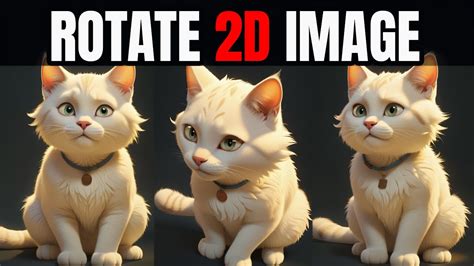The emergence of Toon3D, a cutting-edge technology that bridges the gap between 2D art and 3D modeling, has sparked intriguing discussions within the creative community. While some users praise its potential applications, others raise concerns about its accuracy and practicality in the world of animation and graphic design. One key point of contention revolves around the ability of Toon3D to translate the imaginative and often stylistically distorted worlds of 2D cartoons into coherent 3D environments.
Critics argue that the charm of 2D animation lies in its expressive freedom, allowing artists to play with perspectives and proportions for creative effect. In contrast, the precision and realism expected in 3D modeling could potentially limit the artistic license of creators. The comments highlight the delicate balance between preserving the essence of hand-drawn art and leveraging technology to enhance visual storytelling.
Moreover, insights shared by users underscore the diverse applications of Toon3D beyond traditional animation. From assisting game developers in visualizing 2D concepts in 3D space to reconstructing demolished landmarks from historical images, the tool offers a wide array of creative possibilities. The prospect of generating stereoscopic versions of classic cartoons or enabling VR experiences based on beloved animated series opens up new avenues for immersive storytelling.
For artists and studios exploring the integration of AI-driven tools like Toon3D, the discussions shed light on ethical considerations and the potential impact on the art industry. While the technology presents exciting opportunities for streamlining workflows and enhancing visual fidelity, concerns about automation replacing traditional artistic skills and diminishing creative autonomy linger. The evolving landscape of AI in art production prompts reflections on the evolving role of human creativity in a rapidly advancing digital era.
The interactive nature of Toon3D, allowing users to navigate and explore reconstructed scenes, hints at its potential as a pre-visualization tool for filmmakers, animators, and content creators. By offering a glimpse into 3D environments based on hand-drawn sketches, the tool could streamline pre-production processes and inspire new storytelling approaches. The fusion of artistic vision and technological innovation exemplified by Toon3D underscores the ongoing evolution of digital artistry.
As users delve into the technical intricacies of Toon3D, questions arise regarding the quality of the generated 3D models, computational requirements, and training data utilized in the process. The balance between computational efficiency and visual accuracy remains a central challenge for AI-driven art tools, emphasizing the need for continuous refinement and user feedback. Despite current limitations and aesthetic discrepancies, the growing interest in tools like Toon3D signals a shift towards leveraging AI for creative expression and immersive content creation.
Ultimately, Toon3D serves as a catalyst for exploring the intersection of art, technology, and artificial intelligence in the realm of visual storytelling. By reimagining familiar 2D worlds in a three-dimensional space, the tool challenges traditional notions of animation and opens doors to innovative approaches in content production. The ongoing discourse surrounding Toon3D reflects a broader conversation within the creative community about the role of AI in shaping the future of art and entertainment.
In conclusion, Toon3D represents a glimpse into the transformative potential of AI-powered tools in redefining artistic boundaries and pushing the boundaries of visual storytelling. While debates continue regarding its practicality and impact, the innovation behind Toon3D sparks imagination and dialogue about the fusion of human creativity and machine intelligence in the ever-evolving landscape of digital art and animation.


Leave a Reply